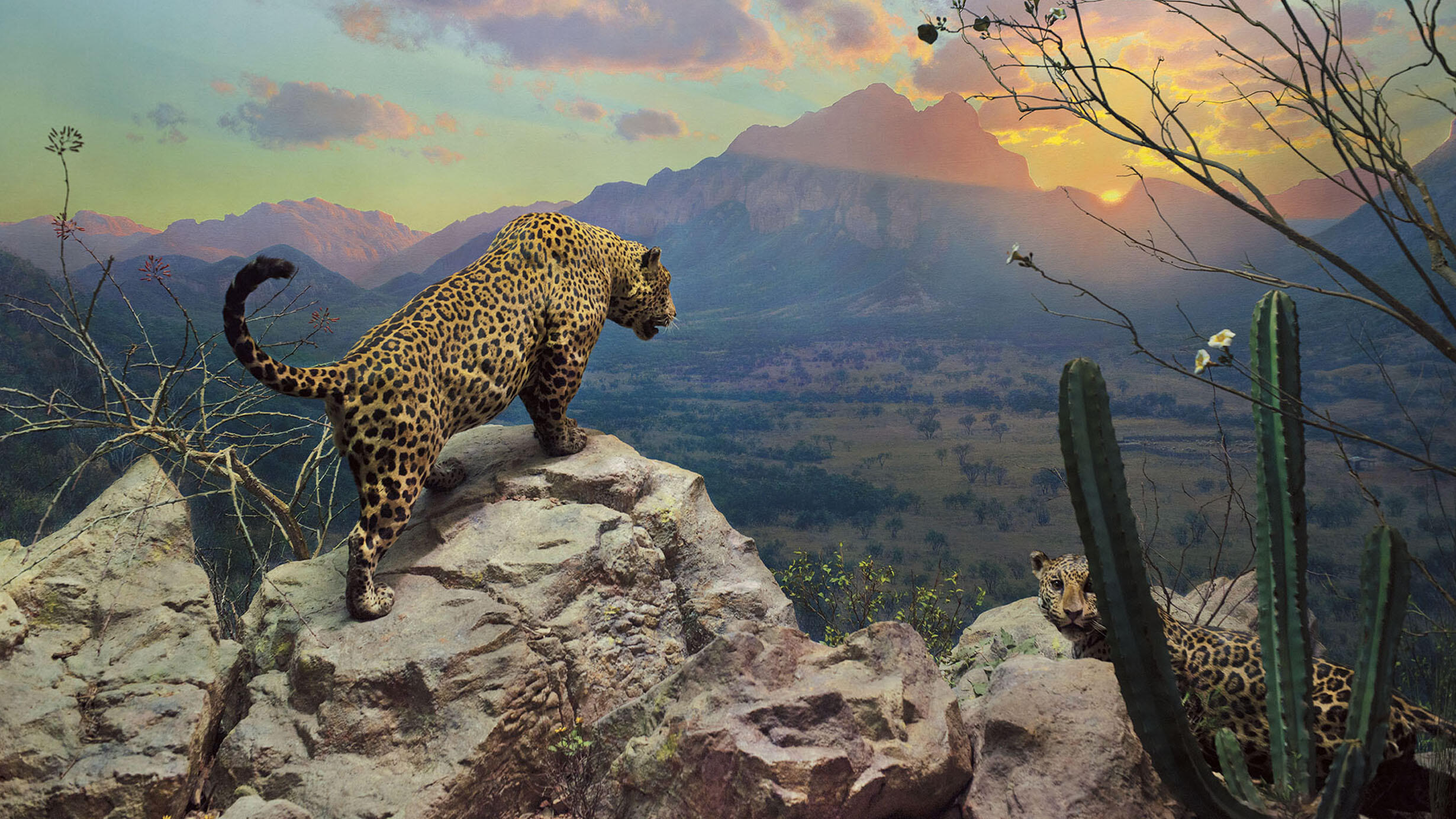Jaguar
Part of Hall of North American Mammals.
 R. Mickens/© AMNH
R. Mickens/© AMNH October at Sunset, Sonora, Mexico
The jaguar is the largest cat in the Americas. Its muscular, compact frame is built for strength and stealth rather than extended pursuit. A jaguar’s jaws can crush the skulls of small mammals and can even pierce turtle shells. For larger prey, it pounces, bringing down the victim by wrenching the head with a swipe of its wide paw.
These jaguars are seeking prey at dusk, as is typical for large predators. Sometimes siblings and mating pairs travel together, but usually jaguars roam alone. Young males may wander hundreds of miles to establish territory, which they mark in their catlike way: by spraying, cheek-rubbing and claw-raking.
Jaguars on the Edge
Near Guaymas, Sonora, Mexico
Poised on the eastern rim of a box canyon, a male jaguar studies a livestock corral in the shrubland below. Chiefly known as tropical rain forest animals, jaguars also tolerate drier warm climates such as the Sonoran Desert of the western United States and Mexico. Here at the fringe of their modern range, jaguars live sparsely, limited by what water and prey they can find.
This region wasn’t always the margin of jaguar existence. The species actually evolved in North America from an ancestor that migrated here from Asia. Until 10,000 years ago, jaguars roamed the southern United States as far as Florida.